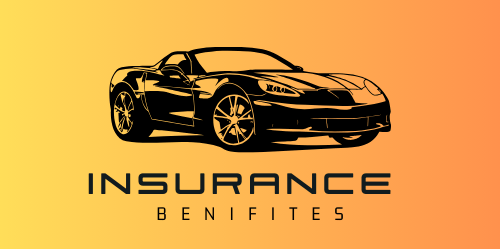Gap insurance refund after total loss means when your car is totaled, it’s stressful. You’ve got lost your vehicle. You will also still owe cash on your auto credit. This is often where Gap insurance comes in. But what happens together with your Gap insurance discount after adding up to misfortune? Let’s jump into this topic and explain everything.
What Is Gap Insurance?
Gap insurance stands for Guaranteed Asset Protection. It covers the difference between your car’s worth and what you owe on your auto loan. If your vehicle is declared an add to loss or stolen, Gap Protection pays the “gap.” It pays the difference between the car’s esteem and your loan balance.
For example, imagine your car is worth $15,000, but you owe $20,000 on your credit. Your insurance company will pay $15,000. Without Gap protections, you’d still owe $5,000. Gap protections cover that remaining sum.
What Does “Total Loss” Cruel?
A total loss happens when your car is damaged and has passed repair. It can also occur if the repair cost exceeds the car’s value. The insurance company decides if the vehicle is totaled after a mischance. On the off chance that it’s stolen and not recovered, they also decide. In these situations, your backup backup plans pay your car’s actual cash value (ACV). This sum is less than what you paid for it or what you owe.
Does Gap Insurance Refund After Total Misfortune?
No, you do not regularly get a gap insurance refund after total loss. Here’s why:
The company has satisfied its contract once your car is totaled and your Gap insurance has been paid. In this case, Gap Insurance has done its work by covering your loan. Therefore, no discount is given for the remaining arrangement period.
However, if you paid off the car loan or sold your car recently and experienced an overall loss, you can qualify for a discount on unused GAP insurance.
When your car is damaged or stolen, acting quickly is vital. First, you should contact your car insurance company to file a claim. This step is crucial for starting the recovery process. After you file the claim, the insurance company will assess the harm. They will send an agent to survey whether the car may be an add-up to misfortune.
If your car is regarded as an add-up to a loss, your regular car insurance will pay out. This payout is known as the actual cash value of the vehicle. It reflects what your vehicle is worth during the accident or robbery. Presently, this can be where things can get complicated.
You might encounter a money-related money-related gap if you owe more on your car loan than the insurance pays. This can be basic to get it. For example, if your car’s real cash value is $18,000 but you still owe $23,000 on your credit, there’s a $5,000 hole. Your regular insurance will, as it were, cover $18,000.
The remaining $5,000. So, you’d get $18,000 from your car insurance, and your Hole protections would handle the difference. This implies you won’t need to pay that sum out of the stash.
When Can You Get a Gap Insurance Discount?
Whereas you, by and large, won’t get a Gap insurance discount after adding up to a loss, there are circumstances when a discount is conceivable. Here are the most common scenarios:
You Paid Off Your Loan Early
If you pay off your car credit early, you do not require Gap insurance. You’ll be qualified for a discount on the unused parcel. For example, if you paid for three a long time for Gap scope but paid off your car after two a long time, you’ll get a discount for the remaining year.
You Sold or Traded Your Car
If you offer or exchange your car and do not require the Gap protections, you will get a discount for the unused scope.
You Cancel Gap Protections Early
You might get a prorated discount if you cancel your Gap insurance policy before the term ends. The discount will depend on how much time is cleared out on the arrangement.

How to Request a Gap Insurance Refund
If you’re qualified for a Gap insurance discount after adding up to a loss, here’s how to ask it:
Contact Your Insurance Supplier
Call your Crevice Protection supplier, clarify your circumstance, and let them know you’ve either paid off your car in advance or sold the vehicle.
Provide Documentation
You will have to provide reports indicating that you’ve paid off your advance or sold the car. This may be a credit payoff note or a charge of the deal.
Fill Out Vital Shapes
Some insurance suppliers require shapes to ask for a discount. Make sure you total and yield all shapes.
Wait for the Refund
After you submit your request and printed material, the supplier will handle your refund. The discount typically takes four to six weeks to arrive and is ordinarily a check.
Why You Might Not Get a Hole Discount After Add to Misfortune
As said previously, you won’t get a Gap insurance discount after adding up to misfortune. The reason is that the protections have, as of now, satisfied their purpose. The Gap insurance company secured the contrast between your car’s value and your loan balance. Since the arrangement was utilized, nothing has been cleared out for a discount.
What Does GAP Insurance Not Cover?
It’s vital to know what Gap insurance does not cover:
Deductibles
Gap insurance does not cover the deductible you owe on your essential car insurance. You’ll pay that out of stash.
Car Repairs
Gap insurance will not assist with repairs if your car is harmed but not totaled. Your standard insurance covers repairs.
New Loans
Gap insurance doesn’t cover new loans you take out, such as rolling over an ancient advance.
Down Payments
Gap insurance won’t cover any down installments you made on the vehicle.
The Part of Gap Insurance in Car Financing
You might owe more than the vehicle’s value when financing a car.
This may happen, especially within the early or long term of the loan. Cars devalue rapidly, which suggests their value drops altogether within the, to begin with, a long time. Usually why Gap protections are often recommended on the off chance that you:
Have a Long Loan Term
An extended loan term (over 60 months) implies you’ll pay off the car more slowly. You’ll owe more than the car is worth for a longer time.
Made a Small Down Installment
If you put little or no money down, you’re more likely to owe more than the property is worth.
Bought a Car That Depreciates Quickly
A few cars lose value faster than others. Investigate makes a difference; you discover a vehicle that depreciates gradually.
Can You Avoid Needing Gap Insurance?
There are some ways to avoid needing Gap insurance:
Make a Large Down Payment
You’ll owe less if you put an expansive down payment on your car. You’re less likely to owe more than it’s worth.
Choose a Shorter Loan Term
A shorter loan term helps you pay off the car faster, diminishing your chances of being upside down on the loan.
Buy a Car with Slow Depreciation
Some cars hold their value better than others. Do your research to discover a vehicle that depreciates slowly.
Options for GAP Insurance
If you do not need Gap insurance, there are choices:
New Car Replacement Scope
A few insurance companies offer new car replacement scopes. This will supplant your totaled vehicle with a brand-new one instead of paying its depreciated value fairly.
Loan/Lease Payoff Insurance
This sort of insurance is comparable to Gap insurance. It pays a parcel of the contrast between your car’s value and what you owe.
Conclusion
A Gap insurance refund after total loss, more often than not, isn’t possible. The insurance company has fulfilled its reason by covering the distinction between your car’s value and credit. If you pay off your credit early or sell your car, you’ll qualify for a refund on the scope of the unused parcel.
Understanding how Gap insurance works is fundamental for making educated decisions about your auto insurance needs. Continuously remember your rights and options regarding your Gap insurance refund after adding up to a loss.

